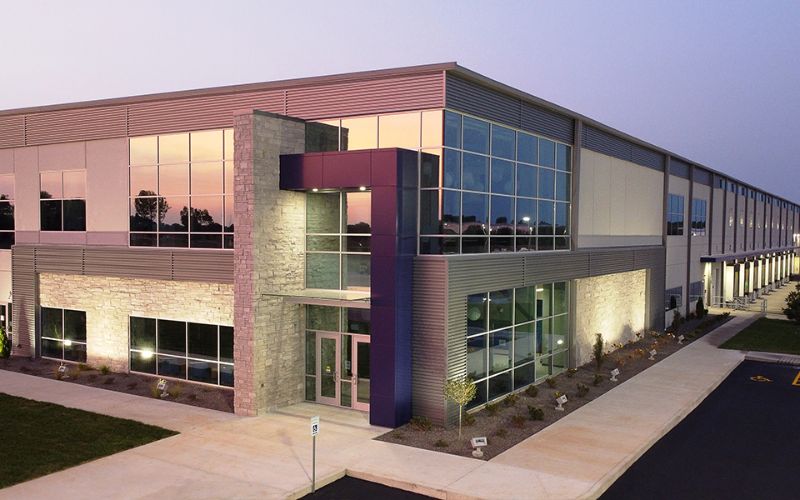The current extreme weather conditions are touching every part of the globe resulting from environmental degradation. Entry of toxic elements into the environment has resulted in catastrophic disasters. However, there remains a high hope of putting all the pieces together. The urge for a greener world will never change, to make it pollution-free. One of the critical areas of focus is the agricultural sector. The future of agriculture is a fusion of innovative farming and environmental responsibility. In today’s rapidly changing world, sustainable practices and innovative design are not just trends but necessities. All pioneers in agricultural building fabrication aim to integrate these two facets into our signature structures.
Solar Panel Integration On Steel Buildings
Solar energy, with its endless possibilities, represents the future of clean energy. The expansive roofs can serve as more than protective barriers for sprawling structures like warehouses. They can be transformed into powerful energy generation platforms. By integrating solar panels into our designs, we are not just adding a feature but fundamentally redefining the purpose of the roof. This is about making every square inch work towards a greener future. With advancements in solar tech, these panels offer better energy conversion rates, ensuring agricultural buildings can significantly offset their energy consumption. Integrating solar solutions diminishes carbon footprints and provides long-term cost savings for businesses. This integration ensures that structural integrity supports and enhances solar energy harvesting.
Recycled and Sustainable Materials
Sustainability in construction goes beyond energy conservation. The materials chosen play a significant role. Steel, inherently recyclable, offers a prime example. By emphasizing recycled steel and other sustainable materials, our constructions minimize the environmental impact of raw material extraction and processing. Every beam and pillar speaks of our commitment to a greener planet. This approach doesn’t compromise on strength or durability but instead adds a layer of eco-responsibility to our structures.
Insulation Technologies For Steel Warehouses
Insulation, often unseen, plays a pivotal role in energy efficiency. The proper insulation can make a significant difference in warehouses, where vast spaces need to maintain stable temperatures. Modern insulation materials are crafted using advanced technologies that allow them to respond dynamically to external temperature fluctuations. These materials, especially those with reflective properties, create an energy-saving envelope around the steel building. They work to reflect away excessive heat in the summer while retaining warmth during colder months. This dual action ensures a consistent internal environment, reducing the need for energy-intensive heating or cooling systems. The designs must prioritize this thermal efficiency, aligning with the commitment to create economically and environmentally sound structures.
Skylights and Natural Lighting
Natural light’s transformative power is unmatched. In a steel warehouse setting, where operations often span throughout the day, utilizing natural light can drastically cut down energy consumption. Our designs emphasize large skylights and strategically placed windows, maximizing the inflow of sunlight. Beyond just energy savings, natural light offers intangible benefits. Workspaces bathed in sunlight have been shown to boost productivity and enhance the well-being of individuals. This is about lighting up a space and enriching the work environment. By balancing the placement and size of these natural light sources, manufacturers ensure that steel warehouses provide functionality and a positive ambiance, reducing reliance on artificial lighting and fostering a brighter, more energetic work environment.
Rainwater Harvesting Systems
Water scarcity is a pressing global issue. As constructors of large-scale structures, we integrate water conservation measures. Rainwater harvesting systems in our designs offer a dual solution – they prevent wasteful runoff and store valuable water. The water these systems capture can be used for multiple non-drinking purposes within the steel warehouse, from landscaping to sanitation. This sustainable approach reduces the strain on local water supplies and provides a buffer against potential water shortages, ensuring operations remain unaffected. Manufacturers design these systems to be efficient and aesthetically pleasing, integrating seamlessly into the overall structure.
Green Roofs
Green roofs are a testament to innovation in sustainable construction. These living roofs, adorned with vegetation, offer multifaceted benefits. Aesthetically, they add a touch of nature to urban landscapes. They act as additional insulation layers, enhancing the steel building’s energy performance. Moreover, absorbing and filtering rainwater plays a role in stormwater management, preventing potential flooding and groundwater contamination. The manufacturers’ green roof solutions are designed meticulously, beautifying the structure and offering tangible eco-benefits, from temperature regulation to fostering biodiversity.
Conclusion
Not only do these eco-efficient solutions provide tangible benefits in terms of energy conservation, but they also promote long-term cost savings and sustainability. Incorporating green roofs, solar panels, and recycled steel are among the many strategies that showcase the versatility of steel as a sustainable construction material. Further, advancements in insulation and passive design techniques enable warehouses to maintain interior climates with minimal energy inputs. These innovations serve a dual purpose: reducing our carbon footprint while ensuring the steel industry remains competitive and resilient in a rapidly evolving market. The future of steel buildings is not just in their structural integrity but in their ability to harmonize with our planet’s ecological needs.
You may also like:



